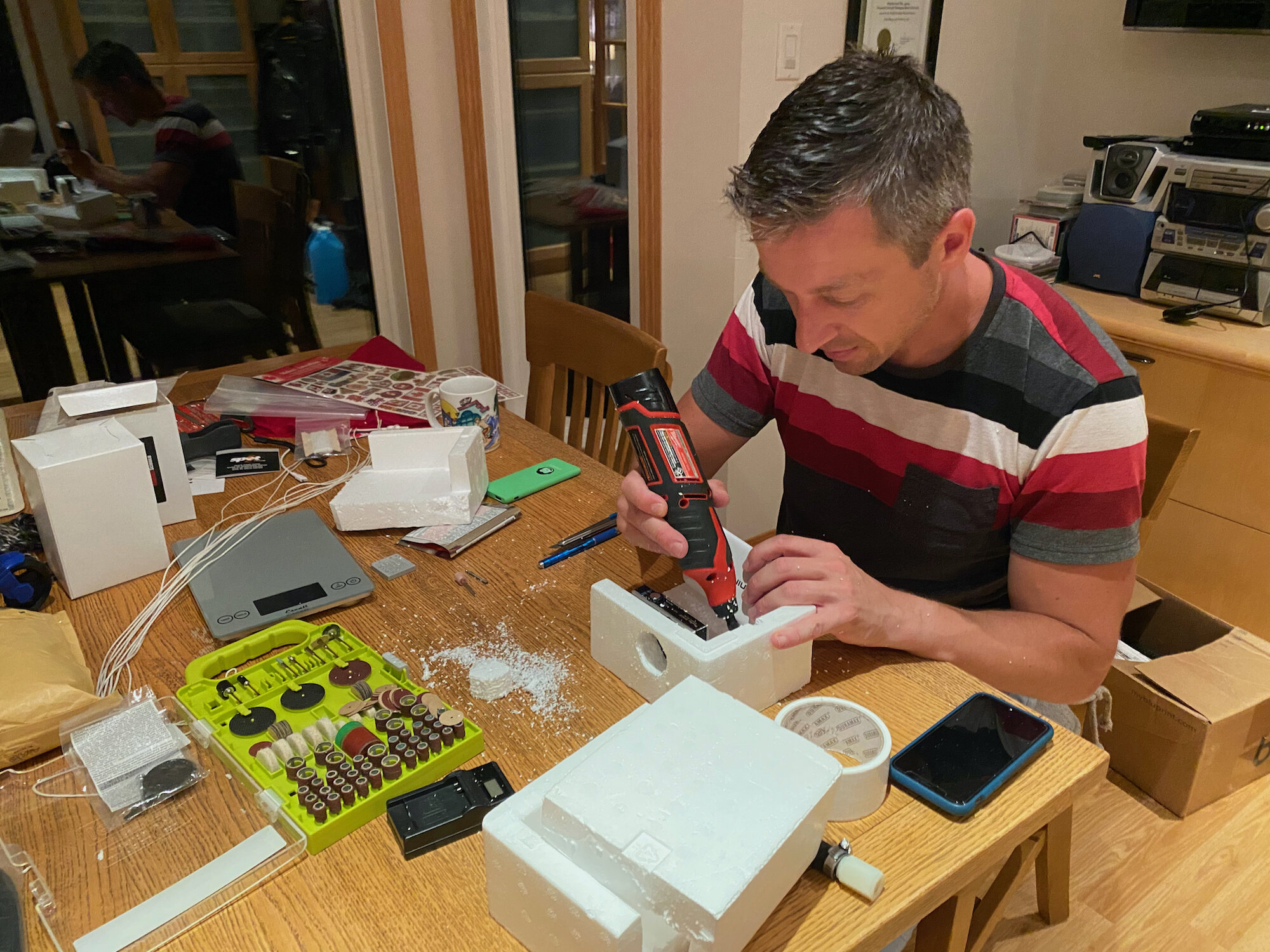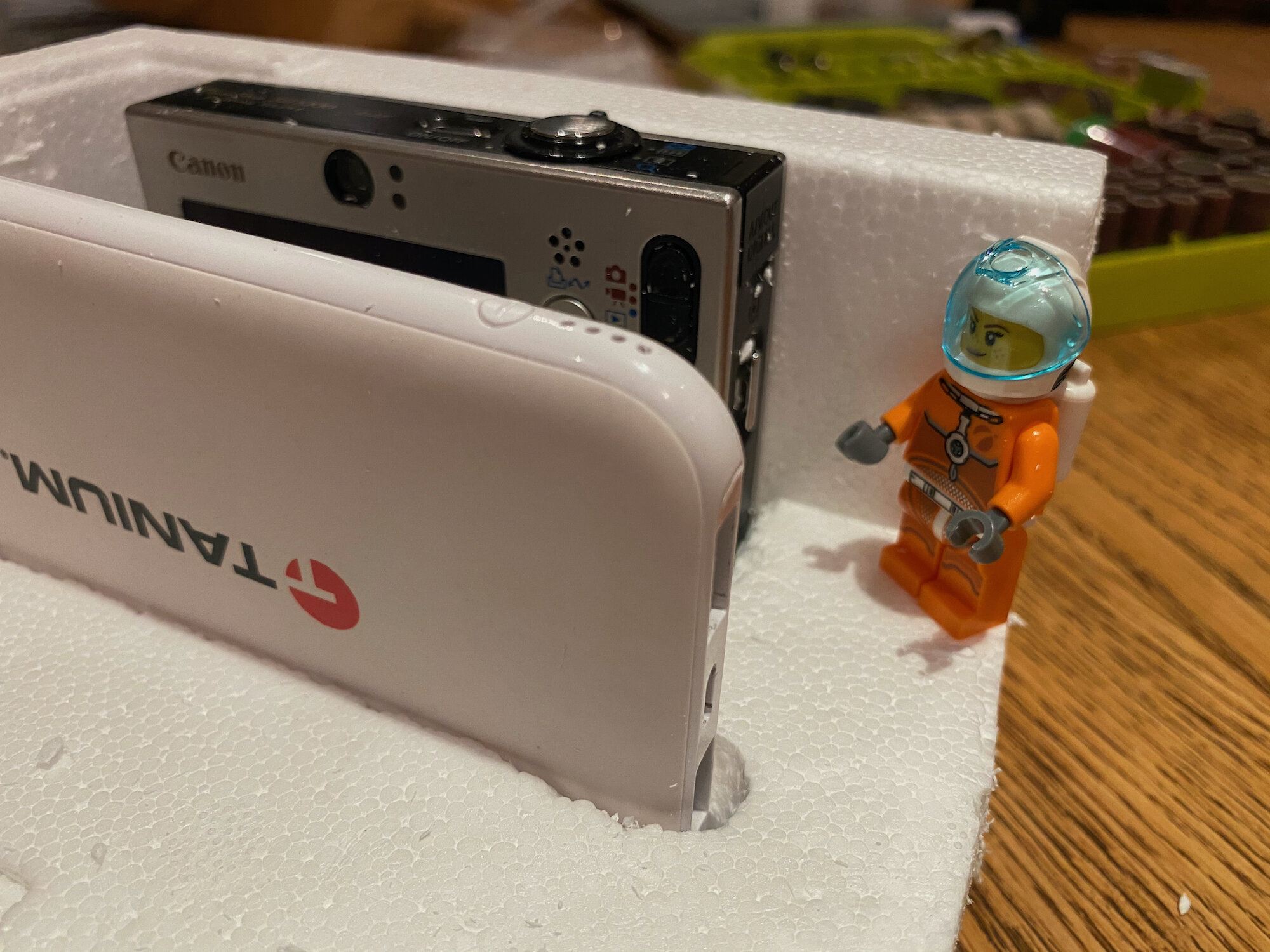We’ll get back to launch planning in a bit, but now some discussion about the payload.
What do you send to space? All in, we had to be <1kg. Even at ~800g we would be risking too slow of an ascent, and a very long and far flight.
Several other people have done similar flights, and a small trinket like a Lego minifig seems to be a favourite - rigged to take a ‘selfie’ from altitude. We love Lego too, so maybe a Lego Astronaut? Maybe a Canadian Lego Astronaut? Maybe a female Canadian Astronaut? Now we’re talkin’. What should we call her? The first female Canadian Astronaut was Roberta Bondar, and the girls’ beloved school teacher at Glebe Montessori is Roberta as well, so that sounded perfect!
Aside from the Lego, we needed a lot of other items to make up the balloon and payload.
We bought the 600g balloon and 1m parachute from a company in the US (High Altitude Science) which specializes in this type of gear. We’d seen styrofoam coolers used in other launches, as they’re easy to work with, light, and float if you’re unlucky enough to have a water landing. I lucked across a guy with a bunch to give away on Kijiji (thanks Phil!), and picked up a couple which we modified to make as small as possible and fit our contents.
We’d need at least one camera, but really wanted two, just in case one failed. Claire volunteered her GoPro 7 to be the primary camera - rigged to capture Roberta’s spacewalk. I’d also seen several other teams launch Canon cameras ‘hacked’ with alternate firmware and programmed to take timed shots. This proved to be a fun challenge as I hacked together a couple scripts to shoot nice, high resolution photos every 60 seconds. Thanks to a neighbour on our local Facebook ‘Buy Nothing’ group for donating an old Canon SD1000, which I’m sure never thought it would come out of retirement for a flight to near space.
We also fit the payload bay for a USB battery pack to keep the cameras powered, and a chemical hand warmer to keep everything toasty.
Back to Roberta for a minute. We knew we wanted to put up some small mementos to give to friends and family. Stickers? M&Ms? Maybe just a bunch of Robertas?
Looking online on BrickOwl (like eBay for Lego), I found a seller who had a dozen Roberta minifigs. Problem is he was in Slovenia. I put in the order with my fingers crossed, but when they hadn’t arrived 2 months later, the day before our departure, I panicked and decided to try to find a replacement closer to home. Back to BrickOwl and indeed, there was one seller in Canada with a ‘Roberta’. I contacted her, and it turns out she was a former colleague at the Bank of Canada, who has been moonlighting in Lego reselling for years. I dashed across Ottawa to get it the night before we left. The very next day, my father informed me he’d received the package from Slovenia. Typical. So anyhow, we had a ton of Roberta’s. So many in fact that we didn’t have space in the capsule once we’d trimmed it down for minimum weight. The platoon of Robertas would instead travel to space affixed to the vehicle with high strength space-age adhesive. (a.k.a duct taped to the outside of the capsule). Must have been a heck of a view.
A failed attempt to pack Robertas into the main capsule.
The last, and maybe most critical piece of payload was a means to track the balloon in flight and to locate it once landed. The ‘gold standard’ way of doing this is using a SPOT Trace GPS tracker, which costs a few bucks, but allows for a reliable location reporting below about 50k ft altitude, and precise coordinates to help recover the precious payload.
After failing to convince the guy at the local Praxair office to sell me a large cylinder of helium, my parents came through by sourcing 4 smaller cylinders of party balloon helium from the local Home Hardware. Pricier, but it would have to do in a pinch.
Molly, our Launch Officer, with enough helium for a whole lot of party balloons.





